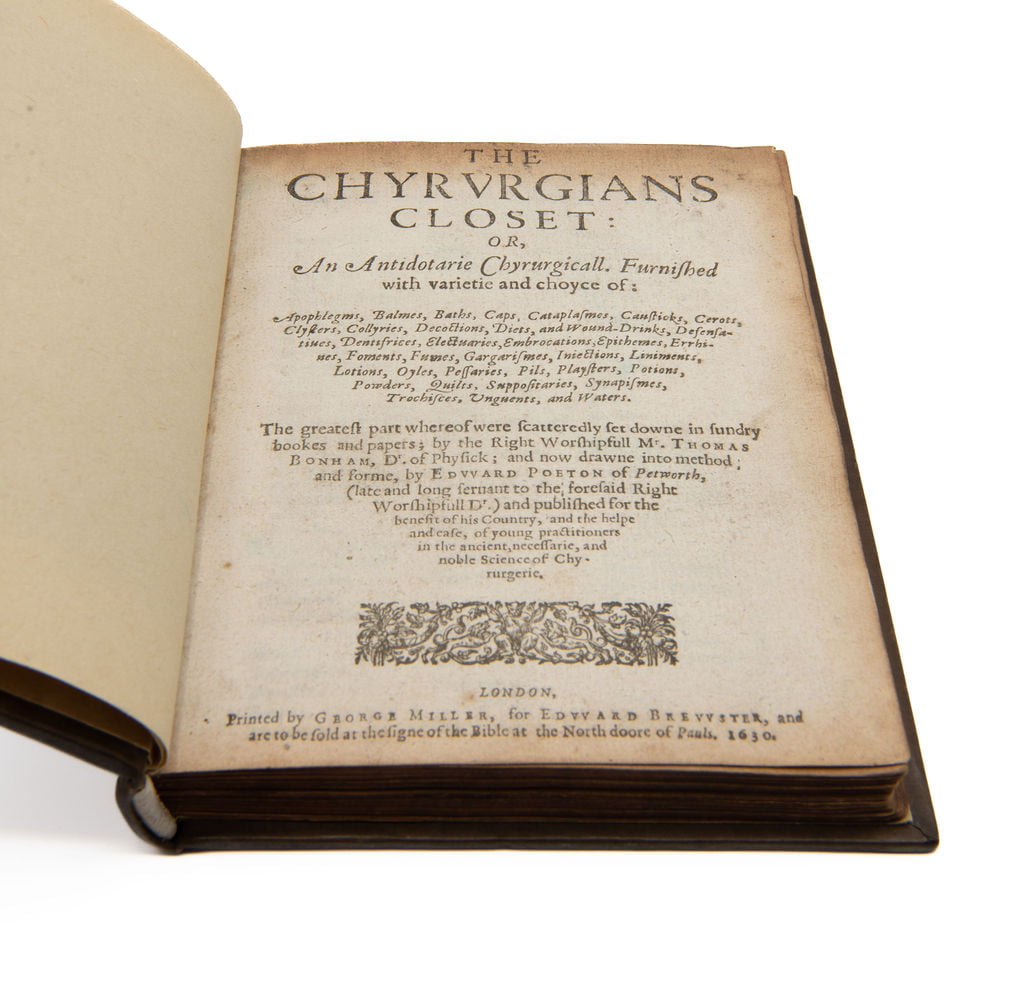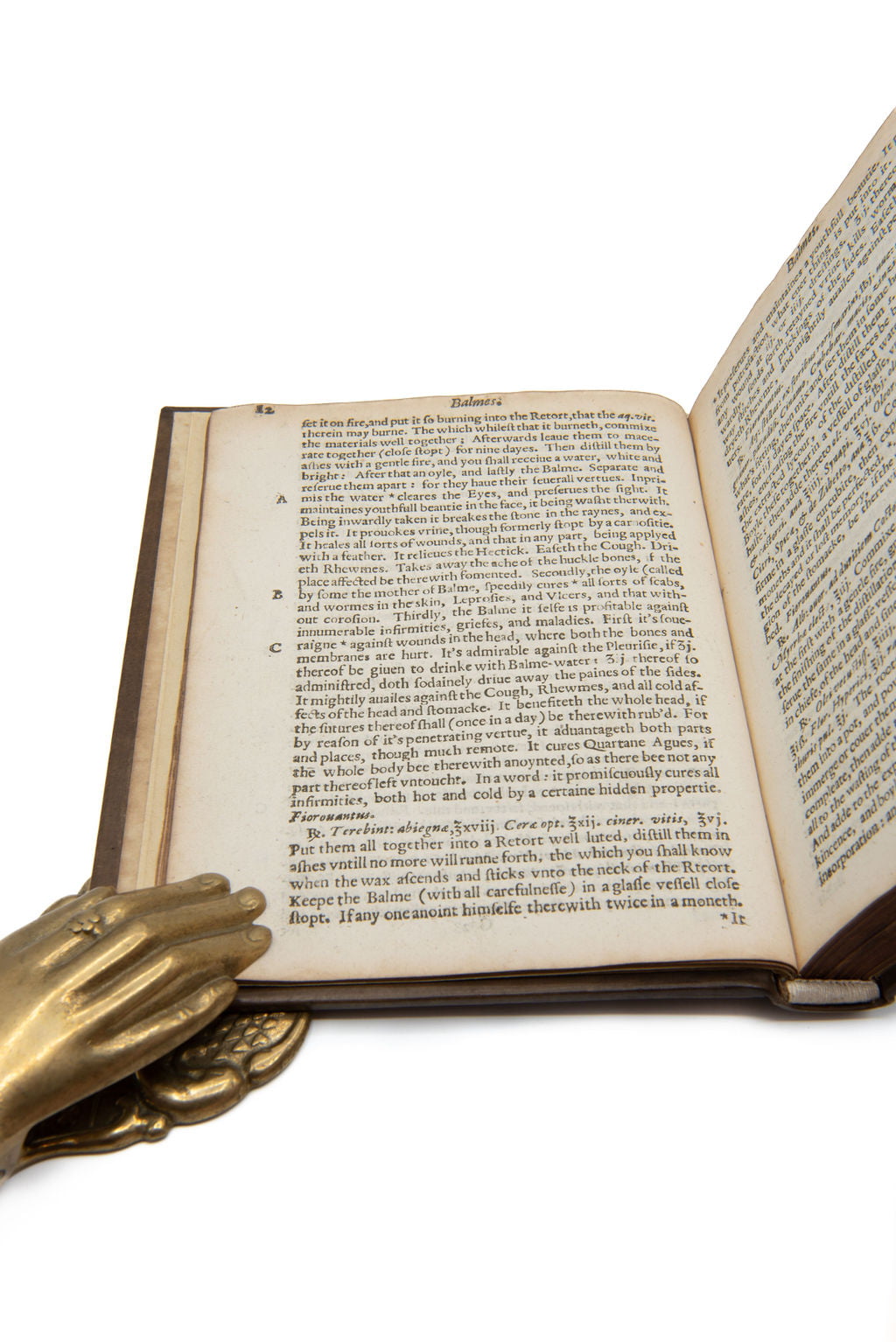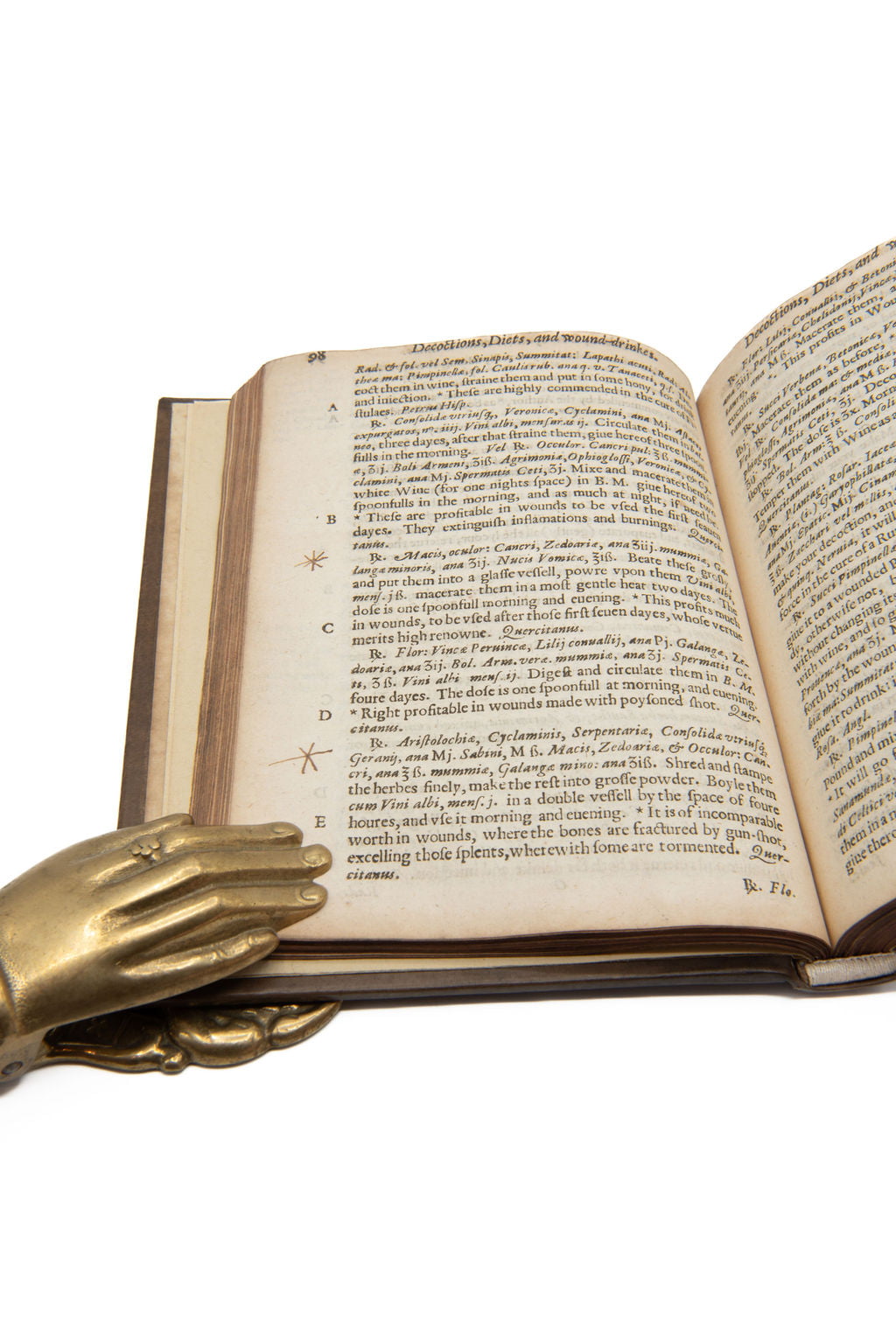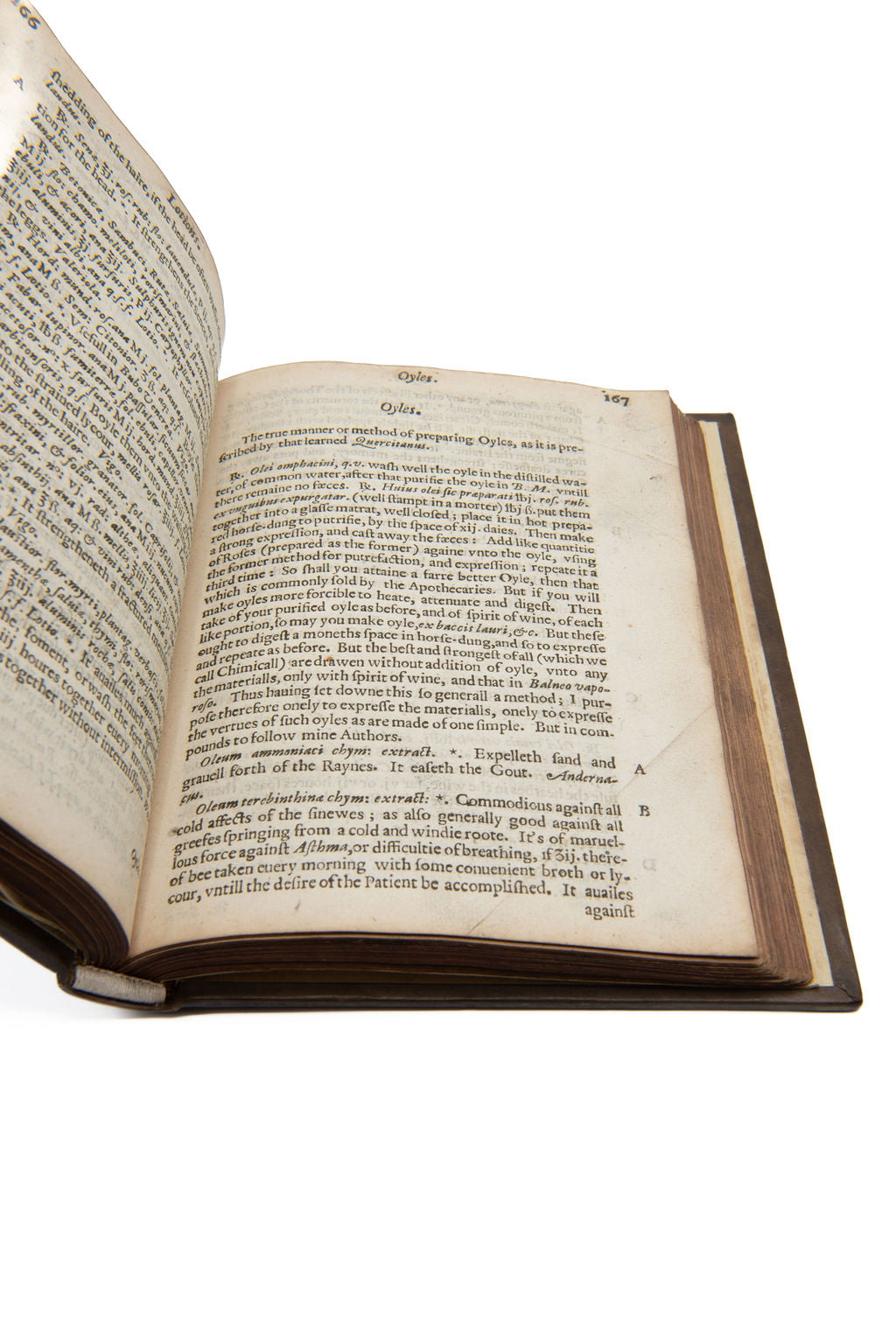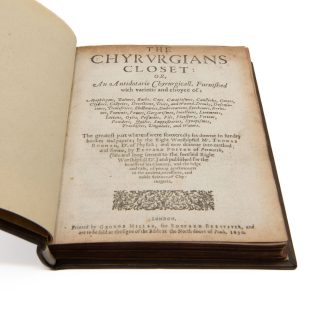BONHAM, Thomas.
ENGLISH SURGICAL PHARMACOPOEIA
The Chyrurgians Closet or an Antidotaire Chyrurgicall.
London, G. Miller, 1630.£2,950.00
FIRST EDITION. 4to. pp. [8], 359, [29]. Roman letter, with Italic. Decorated initials and ornaments. Light age browning, upper edge trimmed affecting one headpiece and occasionally touching running title or page no, a little soiling to outer blank margin of Dd1. A good copy in modern calf, Fox Point bookplate to front pastedown, contemporary ms marginal notes to about six gatherings.
First edition of this interesting English pharmacopoeia for surgeons, with hundreds of medical preparations, originally gathered by Thomas Bonham and edited for print by Edward Poeton, from the late Bonham’s mss. After a degree from Cambridge, Bonham (1564-1628) practised in London c.1600, without the required license of the Royal College of Physicians and was imprisoned. This resulted in the influential case of Thomas Bonham v College of Physicians, where Edward Coke was involved, which was determined in favour of Bonham, deciding that imprisonment was not warranted for unlawful malpractice. Edward Poeton was a licensed physician in London and Petworth, and the author c.1630 of ‘The Winnowing of White Witchcraft’, a treatise devoted to good witches and white magic. ‘The Chyrurgians Closet’ is a repository with hundreds of remedies useful to surgeons, organised in alphabetical categories, from apothegms to waters. Every paragraph – approx. 5 per page, each marked by a letter for easier identification – contains a preparation, with detailed ingredients and references to the type of condition cured (e.g., wounds from sharp objects) and its effects. At the end, Poeton specifies the name of the physician who devised that particular recipe, e.g., Bonham, Poeton himself, Rondelet, Falloppio, Paré or an unspecified ‘manuscript’. A section on ‘cerots’ provides recipes for wax mixed with herbs to be spread on cloth and applied to wounds or body parts, for treatment. Other chapters are devoted to wound-drinks, digestives, fumes, gargarism, injections (i.e., the introduction of therapeutic liquid into the body), lotions, plasters, powders and unguents. The early annotator of this copy was especially interested in apothegms and plasters, and glossed (in Latin), the recipes highlighting the main conditions they could treat, including skull fracture, podagra, plague and scrofula. A most remarkable pharmaceutical encyclopaedia.
ESTC S106514; STC 3279; Krivatsy 1514. Not in Wellcome, Osler or Heirs of Hippocrates.In stock


